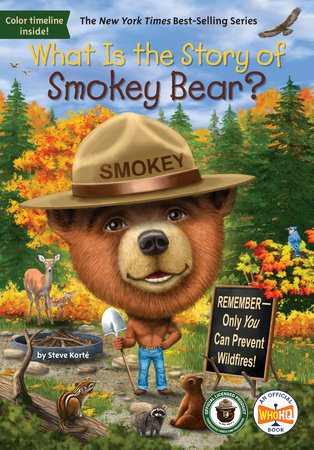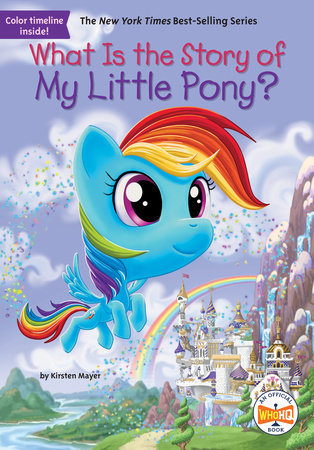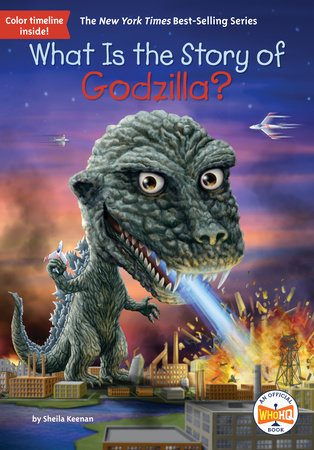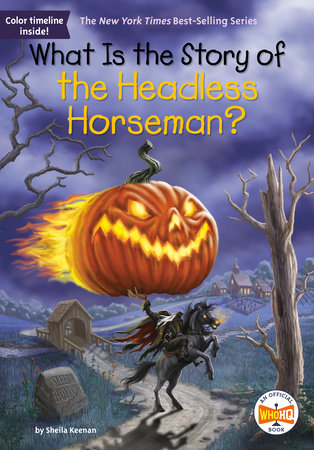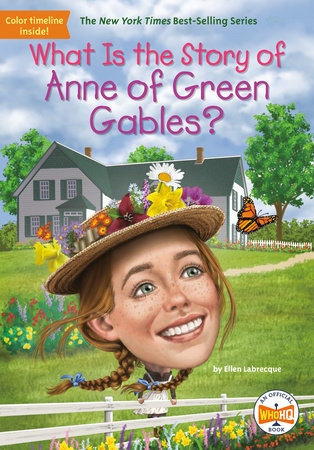Excerpt
What Is the Story of Smokey Bear?
What Is the Story of Smokey Bear? Television became popular around the world in the early 1950s. In those days, television screens were much smaller than they are today—some were only fifteen inches wide—and shows were broadcast in black and white. Families would gather close to the small screen to watch their favorite programs. In the evening, there were news broadcasts, dramas, comedies, and music shows. Saturday morning was the time for children’s shows. Kids would wake up early and huddle near the TV, often still in their pajamas, to enjoy the adventures of their favorite animated cartoon characters. And in between the cartoons there were lots of commercials promoting toys, cereal, candy, and all sorts of fun stuff that kids desired.
It was during the early 1950s that a famous bear from the forest made his debut in a television commercial. He was already well known from posters and radio ads. But a series of TV ads gave the public a chance to see him in action for the first time.
One of his early commercials opened with an animated view of a forest. A little boy was shown enjoying a picnic in an open space with some wildlife pals, including a bird, a deer, and a squirrel. As the boy walked through the forest, he gazed at livestock grazing in a field, timber being harvested, and a beautiful waterfall.
“A forest is sure a lot of things!” the boy exclaimed happily.
Suddenly, a flame erupted in the forest.
The deep voice of a narrator warned, “Yes, but let a little fire get started, catch on, destroy, and your forest is nothing!”
Soon, the forest was reduced to smoldering stumps of burned trees.
Just then, a tall bear appeared next to the boy. The bear was wearing jeans and a forest ranger’s hat.
“You have so many reasons to protect your forest,” said the bear. “Remember, only you can prevent forest fires!”
The name of the bear was Smokey. He was already a beloved fictional character. And soon he would become the face of fire prevention all around the world.
CHAPTER 1 Disappearing Forests When the English colonists arrived on the East Coast of North America in 1607, more than a billion acres of forest stretched across the country. It has been estimated that there were about six million Native Americans living in the country at the time. For centuries the Native communities had successfully managed the land. They were careful to maintain the number of forests while still finding enough space for their homes and crops. The newly arrived colonists, though, did not hesitate to cut down trees to make room for crops. They also used the fallen wood for housing, fences, and fuel. As more and more new colonists arrived, the forests started to shrink. Newly planted seeds could not grow trees fast enough to meet the increasing demand for wood.
“By 1800, a wood shortage developed near large East Coast cities,” said the historian Terry West. “By the 1830s, so many trees had been razed [cut down] that commercial lumbering began shifting to the Great Lakes region of Michigan, Wisconsin and Minnesota.”
After the forests in those states were wiped out, the lumber industry shifted to forests in the South and along the Pacific coast. By 1918, as the country’s population grew to 108 million people, it’s estimated a total of 260 million acres of forest land in North America had vanished!
Two Fires in 1871 On October 8, 1871, a fire broke out in Chicago, Illinois. It started in a barn on the southwest side of town but quickly expanded and swept through the city. Three hundred people died in the fire, and one--third of the city’s population lost their homes. The blaze was so deadly that it came to be known as the Great Chicago Fire.
On that same day, another fire started in a forest in Wisconsin that was roughly two hundred miles north of Chicago. Known as the Peshtigo Fire, it also grew quickly and roared through rural areas of Wisconsin and Michigan. It is believed that more than 1,200 people died in that fire, and over a million acres of land were scorched. The Peshtigo Fire was the deadliest fire in the history of the United States.
Were the two blazes connected? No one knows for sure, but some people believe a falling meteor may have caused one or both fires. All during this period, the number of forest fires in America increased as European settlers moved west across the country. Some people even set forest fires for
fun during the nineteenth century! Even though it’s hard to believe, there was a contest during the 1800s to see who could set the biggest forest fire in the Cascade mountain range in western North America.
Unfortunately, most Americans ignored the dangers of forest fires. They just assumed that there would always be enough trees for everyone.
CHAPTER 2 Wartime Worries In the early 1900s, a government agency called the United States Forest Service was established to protect America’s woodlands and watch over a growing number of government-managed national forests. The Forest Service also tried to educate the public on the dangers of forest fires. But it wasn’t until the 1940s, during World War II, that the American public really started to focus on the idea of forest fire prevention.
World War II began in 1939, when Britain declared war on Germany because Germany sent soldiers to invade Poland. It lasted until 1945 and involved major countries from around the world. Although most of the early days of the war were fought in Europe, there were also attacks made by the Japanese military on United States soil. The most famous of those attacks was the bombing of Pearl Harbor in Hawaii on December 7, 1941.
The United States Forest Service During the 1870s, the United States government started taking charge of some of the forests and wilderness areas in America. This was a new idea and led to the creation of government--managed forests, such as Yellowstone Park Timberland Reserve, which is now part of the Shoshone and Bridger--Teton National Forests in Wyoming. The United States Senate and House of Representatives, the two branches of the government responsible for making laws, decided in 1881 to create a new Division of Forestry. Its mission was to manage forests, plant trees, and educate the public on forest preservation. By 1905, 63 million acres of woodlands in the United States were being managed by the government. That same year, the agency became known as the USDA (United States Department of Agriculture) Forest Service. Over the following years, more woodlands came under the supervision of the government. Today, there are nearly thirty thousand Forest Service employees. The Forest Service manages 193 million acres of land, which is an area roughly the size of Texas. More than two thousand people were killed at Pearl Harbor, and a thousand others were injured. This was the main reason why America joined the war against Japan, Germany, and Italy. These three countries came to be known as the Axis powers during this war.
In February 1942, a Japanese submarine surfaced off the coast of Southern California and fired explosive shells at an oil field near the town of Santa Barbara. The oil field was not far from the Los Padres National Forest. Fortunately, there were no injuries and very little damage. Throughout the war, more than nine thousand Japanese explosive fire balloons were launched at the western United States.
There are four national forests in Southern California, and many people worried that the Axis powers might try to start a large-scale forest fire that could spread to nearby towns. All across the country, there was a real fear that America’s enemies could start fires and then invade the country, causing loss of life and destruction of personal and state-owned property.
During the war, the Forest Service teamed up with two organizations, the War Advertising Council and the National Association of State Foresters. Together they created the Cooperative Forest Fire Prevention Program (CFFP) and developed a “Wartime Forest Fire Prevention” advertising campaign. The goal of the ad campaign was to raise public awareness of the dangers of forest fires and how those fires might harm the war effort.
In 1942, they created a frightening poster showing a smiling enemy soldier holding a flaming match. The caption on the poster read, “Careless matches aid the Axis. Prevent Forest Fires.” Other posters were created, showing scary pictures of Germany’s chancellor Adolf Hitler and Japan’s prime minister Hideki Tojo surrounded by flames. Below them was this message: “Our Carelessness—Their Secret Weapon. Prevent Forest Fires.”
Thirty-six million copies of these fire prevention materials were sent to schools and government agencies around the country. But the response from the public was not what the Forest Service had expected. It turned out that the posters were
too scary!
“There was a lot of debate about the posters the first few years,” admitted Jim Felton, who worked on the ad campaign. “They weren’t well received and the schools didn’t want to put them up.”
So in 1943, the CFFP program decided to create a new ad campaign that was less scary to spread the message. But they needed someone to star in the ads. Who would the public embrace as the face of forest fire prevention?


